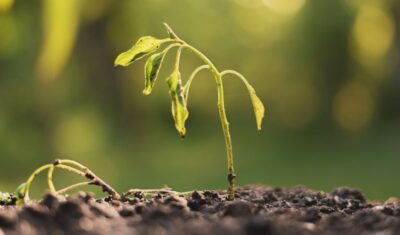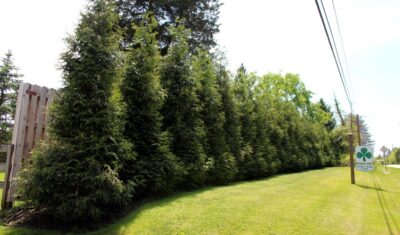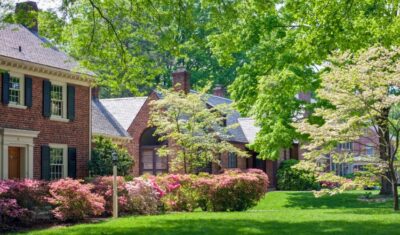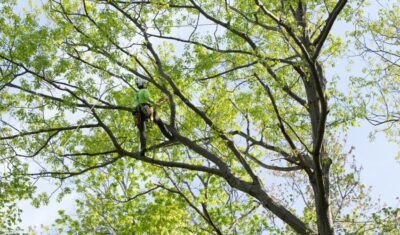Accidents involving a hazardous tree can happen for a number of reasons. While not all of these situations are predictable, trees can provide a few clues that they might present a significant danger. These dangers are avoidable, however, and by keeping a keen eye out for trouble, you can avoid the threat of a hazardous tree.
In this article, we’ll explore five signs that you may have a dangerous tree. They are:
- Sick Tree
- Overgrown Tree
- Dead Tree
- Blocking visibility
- Encroaching on powerlines
1. Your Tree is Sick
It’s not always easy to know if a tree is sick, but there are a few signs you should be aware of. Ohio trees are under threat of a variety of diseases, so keeping an eye out for these signs can clue you into the health of your tree. A sick tree can become a hazardous tree.
Premature Leaf Drop
Is your tree losing leaves or needles earlier in the season than it should? Is your tree dropping more foliage than usual? This can be a sign your tree is suffering from heat or water stress, but it can also be a sign of a health problem such as the fungal disease anthracnose. Have your potentially hazardous tree professionally assessed to be sure.
Wilting
If your tree is wilting, it could be a sign of water stress, but it could also be something much more serious, resulting in a dangerous tree.
One example of a serious condition is vascular wilt disease. This condition is caused by a fungus that attacks the vascular system of trees. In response to the infection, the tree blocks its water supply. This lack of water is what causes the leaves to wilt.
Fungus
Fungal growth around the base of your tree from the trunk can indicate a condition called root rot.
Root rot can be caused by overwatering, which deprives your roots of oxygen and creates an ideal environment for fungi to grow. The condition can eventually weaken the root system, killing the tree and causing it to lean and potentially fall.
Another indication of root rot is a musty odor from your tree or oozing from the base of the tree, but don’t confuse this oozing with sap. If you’re unsure, it’s best to call a professional to evaluate your tree.
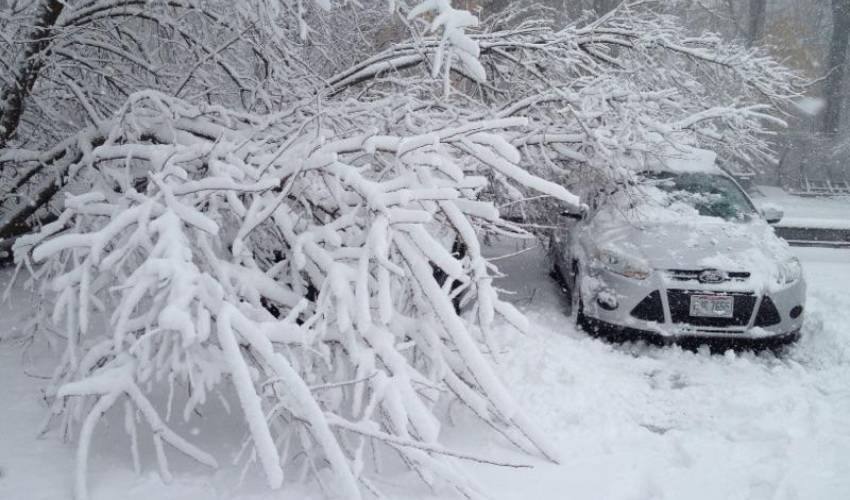
Overgrown branches can become weighed down by snow, breaking and causing property damage.
2. Your Tree is Overgrown
Trees need regular pruning to facilitate healthy growth. Without pruning, trees can become overgrown and become dangerous.
Overgrown branches can become too heavy for the tree to support and break without warning. Additionally, overgrown trees are more likely to break or even fall over in high winds or heavy snow.
Overgrown trees present a real danger and should be evaluated and pruned as soon as possible. Without regular maintenance, trees can become hazardous and cause injuries, like the case of the Portage County man who was trapped under a large fallen limb. Fortunately, he was saved by the local fire department. The man suffered some serious injuries but was able to recover.
3. Your Tree is Dead
Trees are long-lived, but they don’t live forever. Trees will die naturally after enough time, but they can also die prematurely from disease, accidents, or failure to severe weather.
Look for these signs that your tree may be dead or dying:
- Losing bark
- No growth
- Sudden leaning
- Increased woodpecker activity
Dead and dying trees that pose a threat from falling branches and toppling over are hazardous trees. They are especially susceptible to failing due to extreme weather, such as the storms we get in Northeastern Ohio. Another safety issue is that dead trees can be much more dangerous to remove since they may be structurally unsound.
If you suspect your tree may be dead or dying, it’s important to evaluate it before it becomes a real threat to people and property. The dead tree threat had become so severe in Cleveland that the Cuyahoga County city was forced to remove 3,300 of its municipal trees.
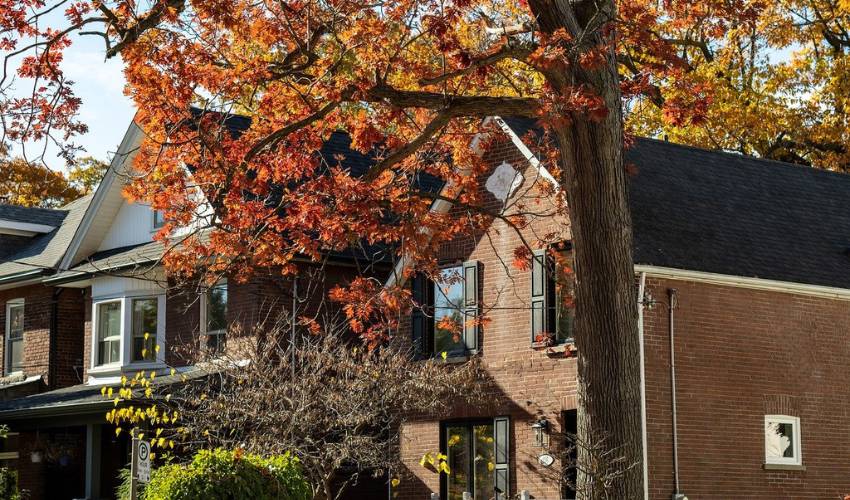
Trees that grow in front of homes like the ones shown here should be pruned annually to ensure visibility.
4. Your Tree is Blocking Visibility
A tree doesn’t have to be sick or structurally compromised to be a danger. Healthy trees can become hazardous if they block visibility.
If your tree blocks the view of pedestrian paths or vehicle right of way, it’s time to prune it. A professional tree service can employ several techniques to make your tree safe, including canopy thinning and crown raising.
5. Your Tree is Encroaching on Power Lines
Trees that grow into power lines are extremely dangerous. In addition to knocking out power, trees touching power lines could start a fire or create an electrocution risk. This is especially true in severe weather situations like the one that occurred in Lake County, resulting in downed trees knocking out power for thousands of residents.
If your hazardous tree is approaching or touching power lines, it’s essential that you have the situation evaluated right away. This problem can often be fixed with pruning, but in some cases, the tree will need to be removed so it doesn’t present a continued threat.
Trees touching power lines are extremely dangerous and should never be taken on as a DIY project. Call a licensed and insured professional to handle these hazardous situations.
Do You Need Help with a Hazardous Tree?
If you have a potentially hazardous tree, you can count on the team at Independent Tree to evaluate it and make recommendations for the best course of action. We proudly serve Northeastern Ohio, including Cuyahoga, Geauga, Portage & Lake Counties. Call us at 440-564-1374 today!
Recent Articles
Topics
About The Author

STAY IN THE LOOP
WITH OUR
LATEST UPDATES
"*" indicates required fields

